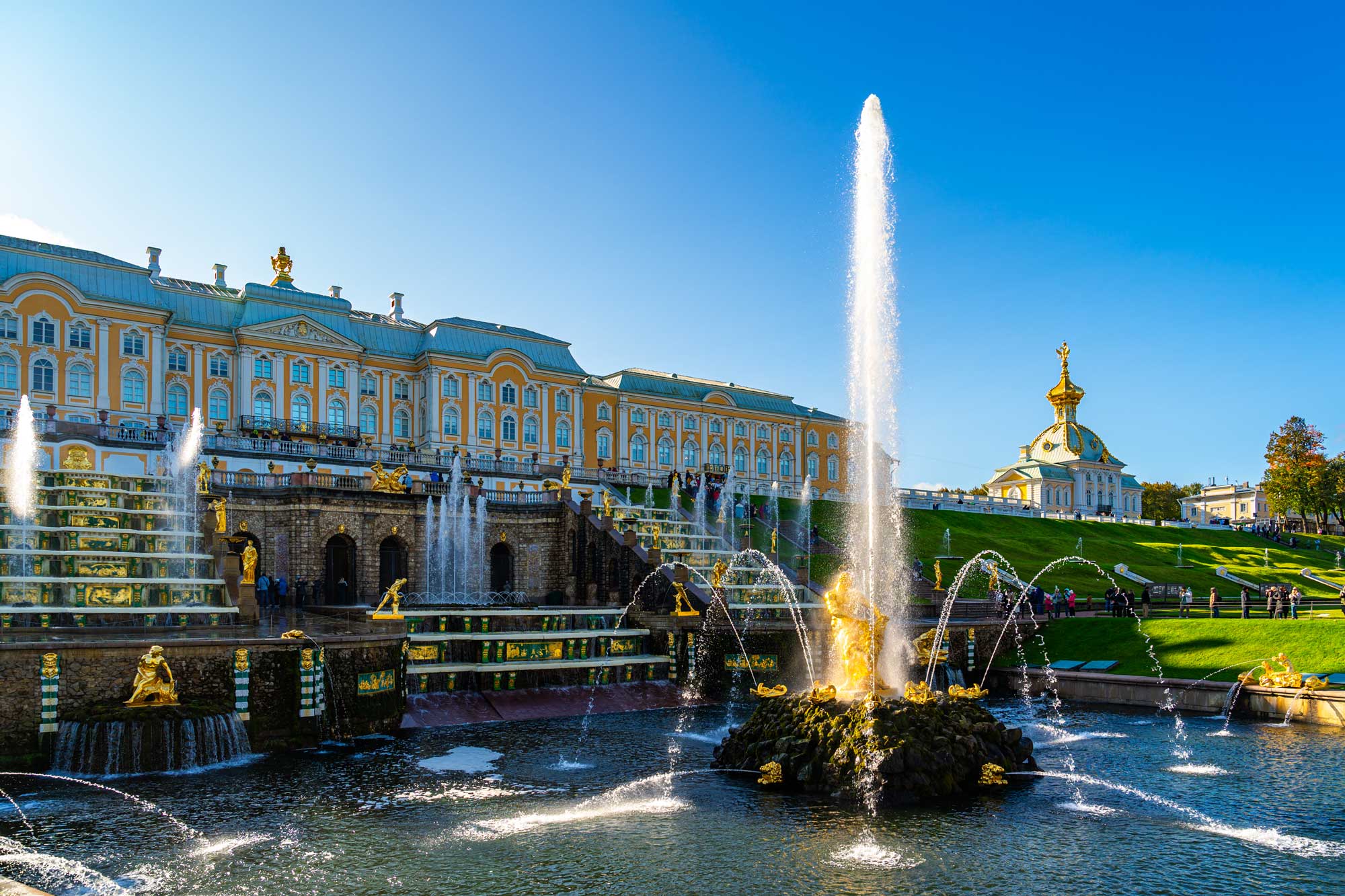 Back
Back
The Samson Fountain

Peterhof, Lower Garden
Sculptural group of the fountain Samson tearing the lion's jaws is an allegory of the victory of Russian army over the Swedish army at Poltava
The decision of the construction of the fountain was made in 1734, when was celebrated the 25th anniversary of the Battle of Poltava.
This was the most important event of the Northern war and occurred on the day of St. Samson that occasioned to the allegoric image of the memorable battle in the form of the struggle of the Old Testament hero Samson with the lion. The sculpture was meant to be a symbol of Russia's victory over Sweden, whose coat of arms contains the figure of a lion.
In order to obtain the maximum height of water column was paved special wooden pipeline with a length more than four kilometers (from Babigonsky pond). In 1736 all works were completed and the fountain water column shot up to a height of 20 meters.
Within ten years after installation appeared a need to replace lead group Samson tearing the lion's mouth. One of the most conspicuous Russian sculptor M. Kozlovsky, using the composition of XVIII century, created a new model in classic forms and the heroic theme began to sound with particular force. In 1802 Kozlovsky's bronze Samson was installed on the pedestal, created from granite blocks. As before at the feet of the hero sported eight dolphins and in the niches at the foot of the pedestal was placed four half-figures of lions positioned according to the cardinal points. By July 1806 the cascade appeared in an updated form.
During the Second World War the sculpture of Samson was stolen by the Nazis. Through the surviving photographs it was re-created by sculptor V. Simonov and in the season of 1947 powerful figure of Samson tearing the lion's jaws again appeared on its pedestal in the bucket of Sea channel.
For the winter, the fountain is turned off. The opening ceremony takes place usually in May.

